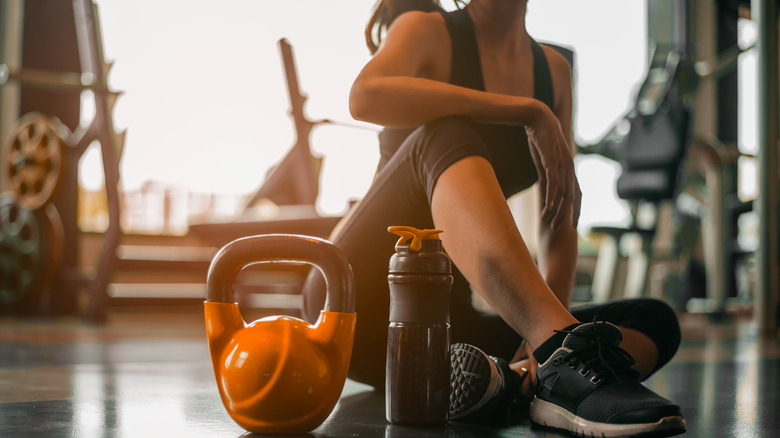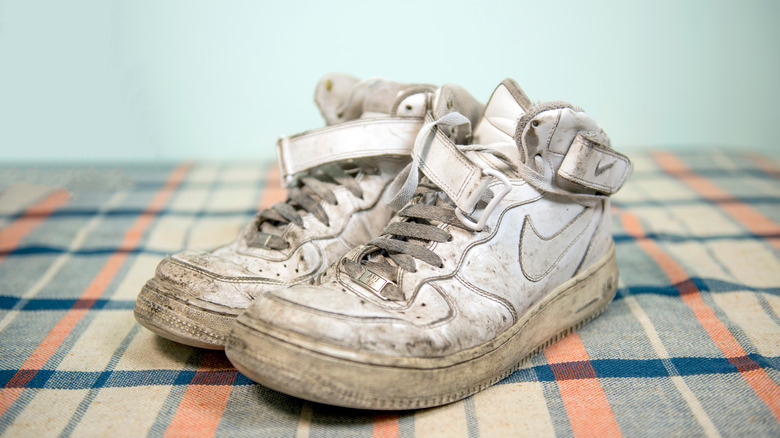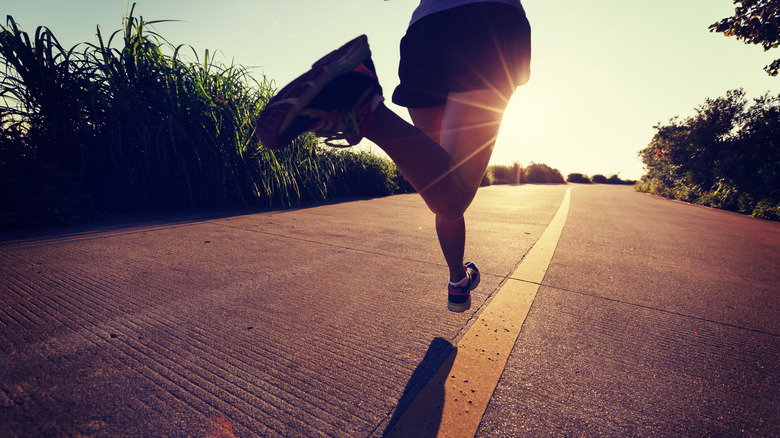How Your Shoes Could Be Ruining Your Workout
Whether a newbie or a long-time exercise fanatic, one of the biggest things to consider when working out is your shoes. It may sound obvious, but Loom Footwear explains that shoes impact overall health — and consequently, bad ones can cause back, leg, and neck pain. Therefore, it's important to invest in workout shoes that make sense for your fitness routine.
When shopping for shoes, go later in the day since your feet swell throughout the day, according to Harvard Health Publishing. It's also a good idea to bring along the socks that you plan to wear with the shoes, so that you can get a good read on how the footwear feels. Several shoe stores may provide customers with thin socks to try on, but it's unlikely you'll be wearing those socks for the long haul. In short, customizing your shoes for your activity preference can help to prevent long-term injury and empower you to perform at your maximum potential.
Wearing worn-out shoes could cause long-term injury
Conversely, just as the right shoes will help you perform at a high level, the wrong shoes could be harming more than just your workout. In order to check that your shoes are right for you, first ensure that they're the right size. Just because they are the correct shoe size doesn't mean that they're the right size for your workout shoes. In fact, "Many injuries of the feet and ankles can be traced back to ill-fitting shoes," podiatrist Megan Leahy told Shape. Furthermore, remember that because your feet swell with heat and exercise, wearing too-small shoes can damage your toenails, as Asics points out.
Additionally, all shoes have a shelf life. You may have a tried-and-true pair that you love, but over time, the cushioning and support that you get from the shoe will break down. Per VeryWellFit, a broad rule of thumb is to say goodbye to running shoes after 300 or 400 miles. At that point, the increased stress on your body from sticking with worn-out shoes could make pain and injuries more likely, according to EMS. Old shoes may also give you blisters as your shoes start to stretch with time, via Aaptiv. Not only that but "foot, knee, hip, and back issues can develop from wearing worn-out sneakers for long periods of time," as fitness trainer Carol Michaels told the outlet.
Customize your shoes to your workout to prevent problems
In order to pick the optimal shoe, match your footwear with your activity and intensity of choice. Per Real Simple, running and walking shoes are both designed for forward motion, but walking shoes are designed for less impact, and therefore won't have as much cushion. It's also good to consider the type of surface that you'll be running on. For instance, are you taking to the trails or hitting the sidewalks? Trail running shoes will be stiffer, more durable, and have more traction, according to Fleet Feet, while road running shoes will have a smoother sole, and generally be lighter and more flexible.
Additionally, activities like Zumba require a specific shoe. "Most cross-training shoes have support and don't collapse when performing a lateral motion. For example, an agility exercise that requires you to change direction," certified trainer Jesse Dietrick told Real Simple. Although running and cross-training shoes may look similar at first glance, a cross-trainer will have little (if any) heel drop, meaning that your foot is flatter to the ground, as Asics explains. Running in the wrong shoes for your workout may lead to discomfort and long-term injury — so be sure to do some sole searching before heading to the gym.


